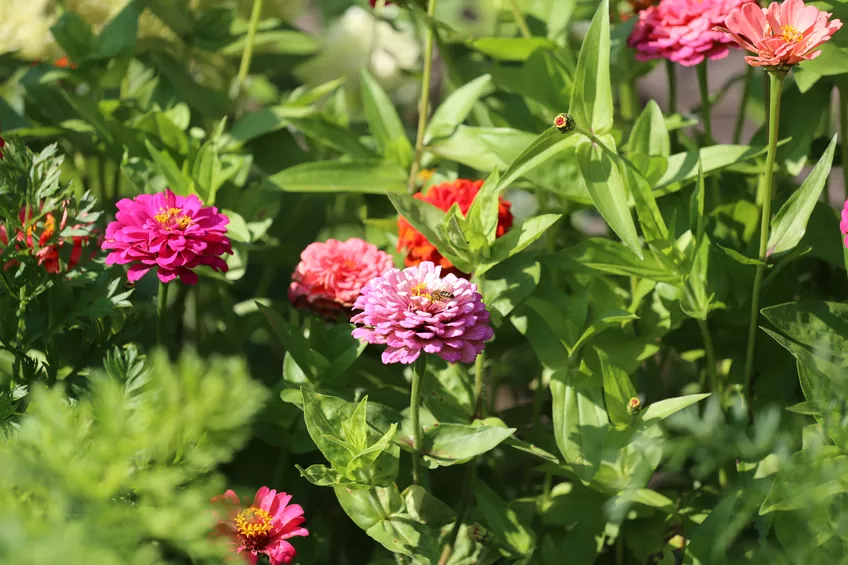- The water requirement
- Fertilize regularly
- Plant zinnias
- Cut zinnias
- Zinnia in winter
- vermin and diseases
Zinnias, which were named after the well-known botanist Gottfried Zinn, embellish flower beds in full sun with their blooms from May to October. The zinnia is also very popular as a long-lasting cut flower. Extremely robust, their maintenance requires little effort.
 The zinnia is quite a thirsty beauty
The zinnia is quite a thirsty beauty
The water requirement
In order for the zinnias to thrive, it is important to water the sunbathers regularly. This is particularly important in planters, as the limited water supply is quickly exhausted on hot days. It may then be necessary to water beds and pots even twice a day. It should always be watered in the morning and evening hours so that the dreaded magnifying glass effect does not occur. Droplets that land on the leaves do not evaporate immediately, so the sunlight breaks through them and burns the leaf surface.
Fertilize regularly
The rich flowering plants need a lot of strength to form new flowers again. Therefore, provide plants in the bed with compost or long-term fertilizer for flowering plants. Give zinnias in planters a special liquid fertilizer weekly.
Plant zinnias
Since zinnias are very sensitive to frost, they only thrive once a year in our latitudes. When the first night frosts announce winter in autumn, the flowers are over and the zinnia is dug up like all annual perennials.
If you would like to grow zinnias yourself for the next garden year, it is therefore advisable not to cut off everything that has faded by mid-September so that the zinnia can form seeds. The following year you can sow them in seed pots (€16.68) or directly in the bed to ensure offspring.
Cut zinnias
General pruning is rarely necessary. However, it is important to regularly clean everything that has faded. This care measure rewards the zinnia with a rich bloom.
Zinnia in winter
You can overwinter particularly beautiful zinnias indoors. Dig up the plants before the first night frosts, plant them in conventional potting soil and bring the zinnias indoors. A bright, frost-free room, such as the garage or stairwell, is ideal for overwintering. It is watered very sparingly, you should avoid fertilizing completely. From mid-May, the sun worshipers can move back outside.
vermin and diseases
Zinnias are very robust and are rarely attacked by diseases and pests. Occasionally the plant is attacked by powdery mildew. During warm, dry summers, leaf bugs like to feast on the sap of zinnias. The insects can be easily collected in the early morning hours or combated by spraying with field horsetail.
tips
Zinnias magically attract bees, bumblebees and butterflies. Therefore, planting the zinnia is also ecologically very valuable.